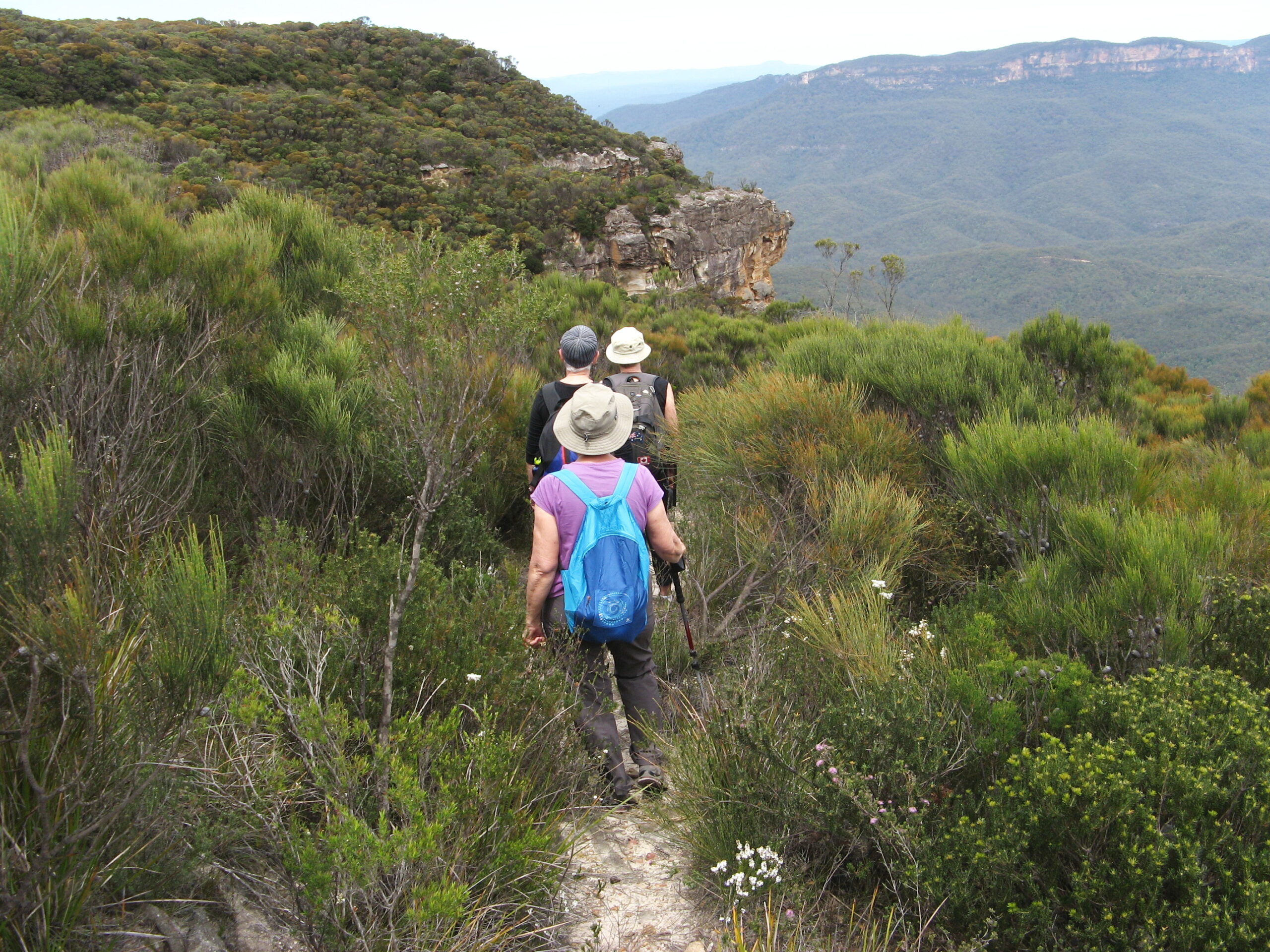[This post supplements the Stop, Pause and Engage (SPE) section of Chapter 2, Connect with Nature] During the last three months, I have been assisting Bushwalking NSW (BWNSW) develop a leadership training course (Bushwalking’ is an Australian version of walking in nature). My brief was to provide content for the course that would enable bushwalking club leaders boost the mental health benefits they and their companions derive from bushwalking.
The move by BWNSW to increase access to the mental health and well-being benefits of bushwalking is largely driven by:
- the strong medical evidence that walking in nature relieves psychological distress, promotes mental health and reduces the risk of mental disorders
- the alarming incidence of mental disorders, especially depression, anxiety and suicidal ideation, in the NSW population (as in many Western societies)
- the emerging recognition that organisations, such as bushwalking clubs, whose activities connect people with nature are capable of providing a valuable, cheap and accessible mental health service.
The mental well-being benefits of bushwalking include:
- mood lifting emotions, especially the ‘beauty buzz’ (aesthetic pleasure) and awe
- relief from depression and anxiety
- reduced stress
- recovery from mental fatigue
- strengthened resilience
- enhanced social connections
- lowered susceptibility to (unhealthy) ruminative thinking.
Impressive as the list is, it is NOT telling us what a bushwalk WILL do for our mental well-being, only what it CAN or MAY do. But the evidence leaves no doubt that walking in nature is USUALLY a beneficial thing to do.
There is also evidence that the beneficial impact of bushwalking can be increased by adopting simple practices that enhance nature’s sensory and emotional impact.
The basic of these practices involves stopping or walking slowly from time-to-time during a walk to focus your attention mindfully on the sights, sounds, textures, odours and textures of the natural features around you.
This practice requires no special skill or knowledge to implement. You can manage it yourself and easily make a conventional bushwalk into a ‘noticing nature walk’.
Just follow these simple guidelines.
- Approach the walk with the intention of engaging with nature; of making ‘being there’ an objective along with getting there’.
- There are no strict rules about when and where stopping and/or slower walking should take place; it could be:
- scheduled e.g., every hour or every rest break.
- prompted by a natural feature or scene – a bush clearing, an inviting log or rock to sit on, a panoramic view, the bank of a creek, a patch of wildflowers.
- done spontaneously / on a whim.
- If you are walking with companions, keep conversation to a minimum during the times set aside for noticing nature. But if you and your companions want to talk about the thoughts and feelings you have while ‘noticing nature’, do so. Such sharing can enrich the experience and deepen relationships.
- To focus attention mindfully, tune your senses, one at a time, into your surroundings; vision or hearing are good ones to start. Engage in some sensory ‘exploration’, looking more closely at a particular feature, for example, or lying down to watch the movement of leaves.
Click on this link to watch a trained ‘forest bathing’ guide mindfully engaging with nature.
Not all bushwalks lend themselves to noticing nature practices. Those that do:
- accommodate 30-60 minutes of stopping and/or slow walking. (Note: beyond one to two hours, the mental well-being gains from noticing nature practices tend to diminish).
- involve a small number (fewer than 10) of like-minded people.
- are undertaken in comfortable weather conditions.
- are in attractive natural settings with few or no intrusions from human made sounds
Consider starting a nature engagement walk, with a ‘switching off-tuning in’ (SOTI) exercise. This is an exercise that will help you switch your mind from the ‘busyness’ of ordinary life and turn your attention to the natural environment you are about to visit.
- A SOTI exercise can be as simple as setting aside a couple of minutes at the start of the walk for a relaxation exercise, such as focussing on breathing with eyes closed (if it is safe to do so), followed by another couple of minutes just looking at and listening to the surrounding bushland.
- A SOTI activity is best done on level ground where it is comfortable to stand.
These guidelines can be applied, totally or in part, to walks in urban nature (parks and gardens) as well as to bushwalks.
The new BWNSW leadership training course incorporates these guidelines. They are there, along with guidelines for increasing bushwalking’s impact on mental resilience and social relationships.
If you are seeking a deeper connection with nature and you have found this post helpful, I would appreciate hearing from you. There is another practical aspect of engagement with nature – to do with emotions – that has a very strong bearing on mental well-being. Your feedback will help me decide whether to discuss this topic in a future post. You can go to the contact page on the website of my book, Connect with Nature to send me an email.

